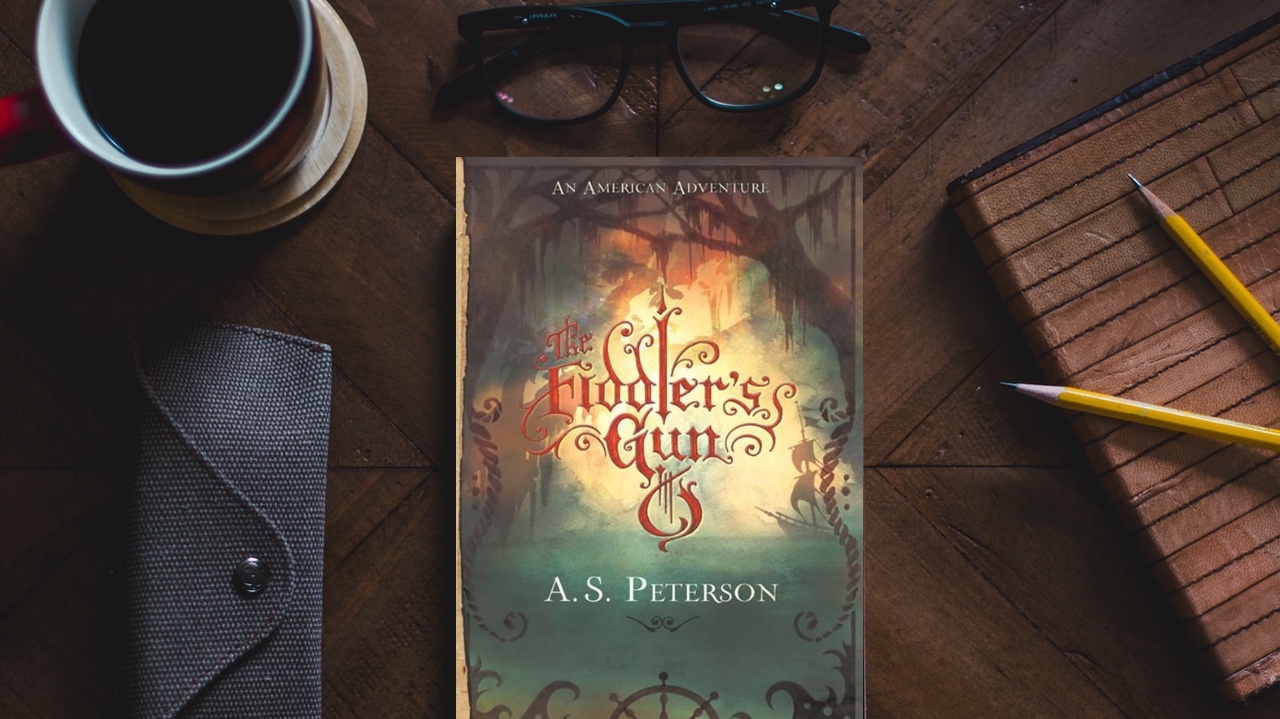“Sometimes you read a book so special that you want to carry it around with you for months after you’ve finished it just to stay near to it.” –Markus Zusak.
After reading The Fiddler’s Gun by A.S. Peterson, this quote became more than true for me. A.S Peterson, the brother of Andrew Peterson, the author of the Wingfeather Saga, writes an incredible story which begins at the brink of the American Revolution.
Here we meet Phinea (Fin) Button, a wild, red-headed, teenage orphan girl, who would rather spend her days romping, fighting, and exploring with the boys than be stuck inside sewing dresses and forced upon polite conversations among the girls. There are only two thoughts that run through Fin’s mind: one is to escape from the orphanage in Ebenezer and the cranky Sister Hilde; the other is her plans to marry her beloved Peter.
Upon being forced to work with the orphanage’s fiddle-playing cook, Bartimaeus, an unforeseen friendship blooms and drastic changes arise in Fin’s life. Dark secrets emerge. To escape, Fin takes Bart’s fiddle and his feared blunderbuss to find freedom outside of Ebenezer’s walls by becoming a sailor on board the Rattlesnake. While trying to outrun the Royal Navy, Fin finds more than excitement and adventure.
The theme of Fin’s tale is one of redemption; it is a story full of history, and it is one of peace. “Beautiful,” as Old Bartimaeus continues to say, “that’s what you got to do with that hurtin’, you got to turn it beautiful.” Peterson masterfully weaves together this tale, and his ability to craft a story is a skill to which every author should aspire. The beauty of it is not only found in the adventurous storyline or the lifelike characters, but also in the lyrical way it is written. Peterson’s words are like poetry: when he describes the songs coming from the fiddle, you can almost hear the music. The character’s emotions resonate within you, and the simple description of Sister Hilde’s waggling nose is enough to make anyone laugh aloud.
The Fiddler’s Gun has shown me what a masterpiece in literature truly looks like, and it’s one of those rare stories that will stick with you forever. Once you have finished The Fiddler’s Gun, make sure its sequel, Fiddler’s Green, is right at your fingertips, because the conclusion cannot be missed.


Agreed.
Great Job Christi! You are such a talented writer! Keep up the good work! 🙂 🙂 🙂 🙂
Thanks Jesse!
Love it! This summary definitely has me sold. Christi, would’ya mind stopping adding so many books to my to-read list? I’m never gonna finish them all! >_<
Haha! I hope you enjoy all of them as much as I do though 🙂
Can’t wait to read this now! 😀
I hope you like it!
Christi, I just recently bought and read these. I could not put them down! I cried so hard at the end. Partly because of what happens, and partly because I threw my whole heart into reading them, and now it’s over. There are so many amazing characters and a great view of how pirates were treated. Awesome article!